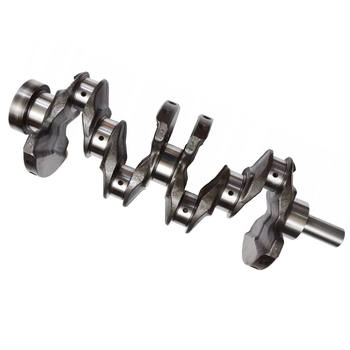The Importance of a Smooth-Running Engine
Have you ever driven a car or operated machinery with an engine that just didn't feel right? Maybe it was excessively noisy or vibrated more than you'd expect. As it turns out, these issues often stem from the crankshaft – a critical component responsible for converting the reciprocating motion of the pistons into rotational motion.
Balancing Techniques for Crankshaft Design
When it comes to reducing engine noise and vibration, achieving proper balance in the crankshaft design is crucial. There are two primary balancing techniques: static and dynamic balancing.
Static Balancing: Ensuring Smooth Operation at Low Speeds
Static balance addresses the issue of weight distribution around the crankshaft's axis. If there's an imbalance, the crankshaft will tend to wobble, causing unwanted vibrations. To correct this, manufacturers add counterweights to the crankshaft, ensuring that the total weight is evenly distributed.
Dynamic Balancing: Minimizing Vibrations at Higher Speeds
While static balancing is essential, it only addresses part of the problem. At higher engine speeds, forces generated by the movement of pistons can lead to significant vibrations. This is where dynamic balancing comes into play.
The Role of Counterweights in Dynamic Balancing
To achieve dynamic balance, engineers must consider both the weight distribution and the centrifugal forces acting on the crankshaft. By carefully designing and positioning counterweights, they can offset these forces, resulting in a smoother-running engine.
Practical Applications: Optimizing Your Crankshaft Design
Now that you understand the importance of balancing techniques let's explore some actionable tips for optimizing your crankshaft design:
The Future of Crankshaft Design
As engine technology continues to evolve, so too will crankshaft design. Engineers are continually exploring new materials, manufacturing techniques, and design approaches to further reduce engine noise and vibration. By staying informed and applying best practices, you can ensure that your crankshaft designs remain at the forefront of innovation.
In Conclusion
In my experience, understanding the role of crankshaft design in reducing engine noise and vibration is essential for any engineer working in the field. By focusing on proper balancing techniques and considering practical design recommendations, you'll be well-equipped to create smoother, quieter, and more efficient engines. So, the next time you're working on a project, remember to give your crankshaft design the attention it deserves – your engines (and their users) will thank you!
Next Steps
Now that you have a solid understanding of the role of crankshaft design in reducing engine noise and vibration, it's time to put this knowledge into practice. Consider reviewing your current projects and identifying areas where you can apply these principles. And, as always, stay curious and keep learning – after all, the world of engine design is constantly evolving.




